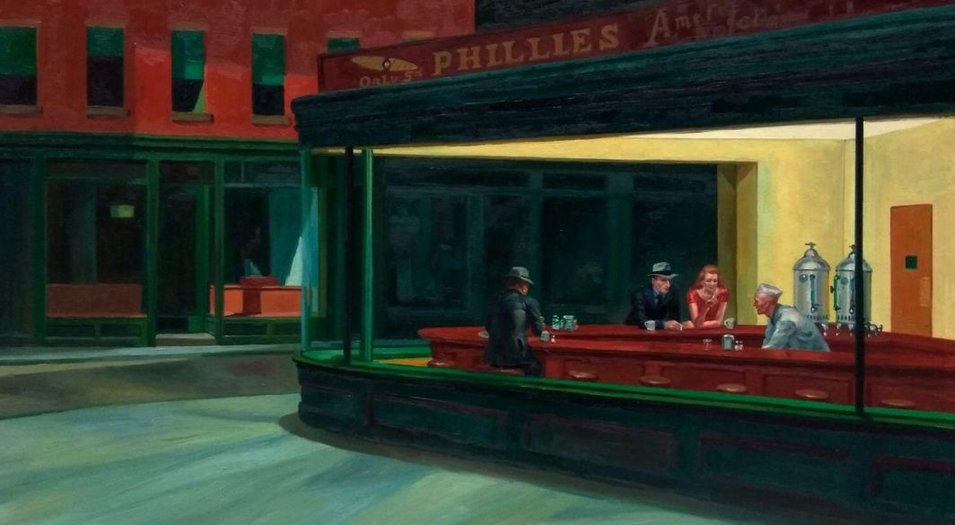

None of these reflections would be visible in daylight.Ī review of the page on which “Nighthawks” is entered shows (in Edward Hopper’s handwriting) that the intended name of the work was actually “Night Hawks”, and that the painting was completed on January 21, 1942. This is clearest in the case of the right-hand edge of the rear window, which reflects a vertical yellow band of interior wall, but fainter reflections can also be made out, in the counter-top, of three of the diner’s occupants. As a final note, the bright interior light causes some of the surfaces within the diner to be reflective. These windows, and the ones below them as well, are partly lit by an unseen streetlight, which projects its own mix of light and shadow. Across the street, the line of shadow caused by the upper edge of the diner window is clearly visible towards the top of the painting. As well, this interior light comes from more than a single lightbulb, with the result that multiple shadows are cast, and some spots are brighter than others as a consequence of being lit from more than one angle.
Nighthawks by edward hopper windows#
For one thing, the diner’s plate-glass windows cause far more light to spill out onto the sidewalk and the brownstones on the far side of the street than is true in any of his other paintings. Nighthawks was probably Hopper’s most ambitious essay in capturing the night-time effects of manmade light. A 2005 Banksy parody shows a fat, shirtless soccer hooligan in Union Flag boxers standing inebriated outside the diner, apparently having just smashed the diner window with a nearby chair. According to Hopper scholar Gail Levin, Helnwein connected the bleak mood of Nighthawks with 1950s American cinema and with “the tragic fate of the decade’s best-loved celebrities.” Nighthawks Revisited, a 1980 parody by Red Grooms, clutters the street scene with pedestrians, cats, and trash. Gottfried Helnwein’s painting Boulevard of Broken Dreams (1984) replaces the three patrons with American pop culture icons Humphrey Bogart, Marilyn Monroe, and James Dean, and the attendant with Elvis Presley. More direct visual quotations began to appear in the 1970s. Many artists have produced works that allude or respond to Nighthawks. For the very first time in their history, a defiant American people felt threatened and under siege. Early in 1942 the United States suffered a second, humiliating setback when the Japanese compelled the surrender of their garrison in the Philippines. The Japanese attack on Pearl Harbor occurred on December 7th, 1941, and President Roosevelt declared war on Japan the next day. Perhaps the symbolism of Nighthawks derives from the events of late 1941-42. He characterizes the four figures, including the back view of a “sinister” stranger, the light inside the diner and the colours and light of the street outside. He details the interior of the diner, down to the cherry wood counter and the jade green tiles at the base of the window. In his notes for the picture, Hopper describes everything, as if writing the screenplay for a film. These sketches would then be amplified in the studio, and the whole composition planned in detail before making a start on the actual painting. Hopper relied heavily on preliminary drawing and sketching, typically done while walking the streets of New York.


 0 kommentar(er)
0 kommentar(er)
